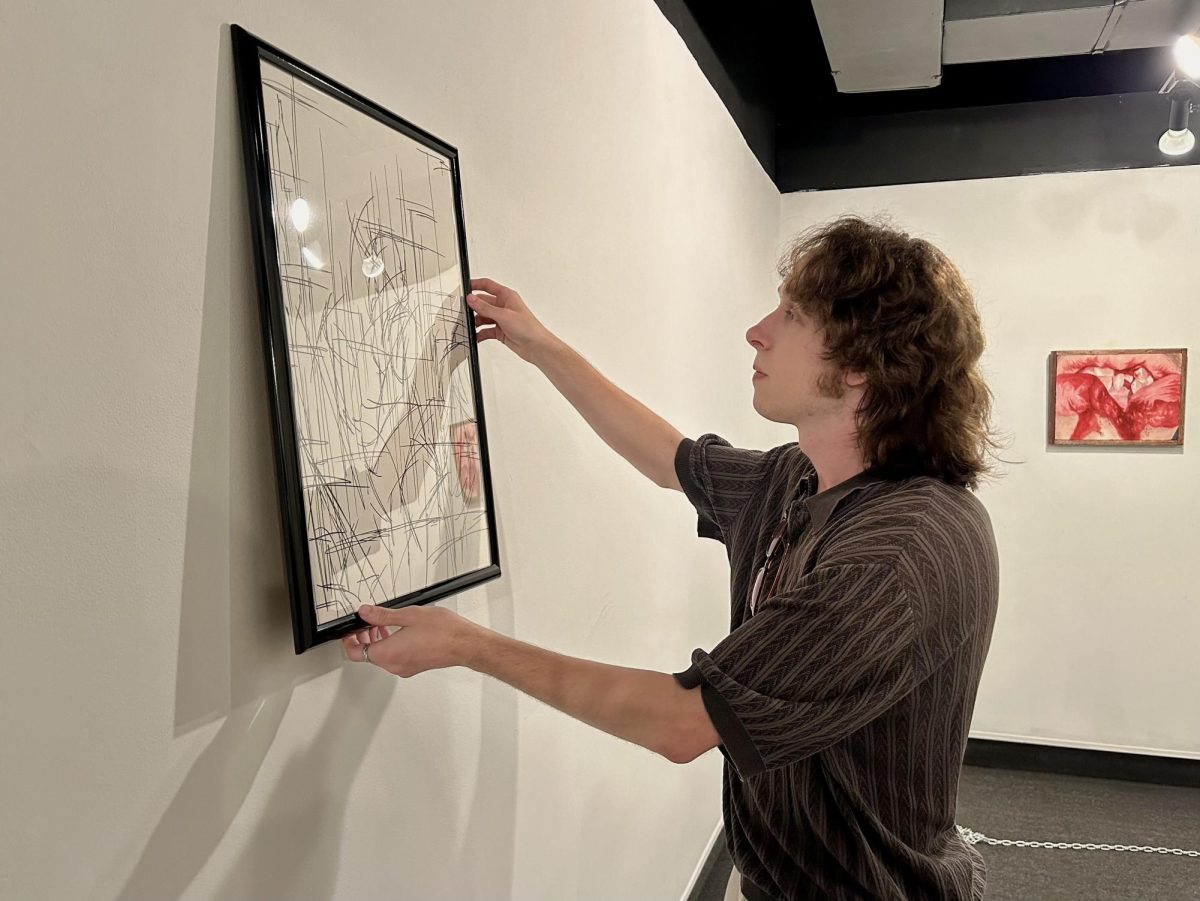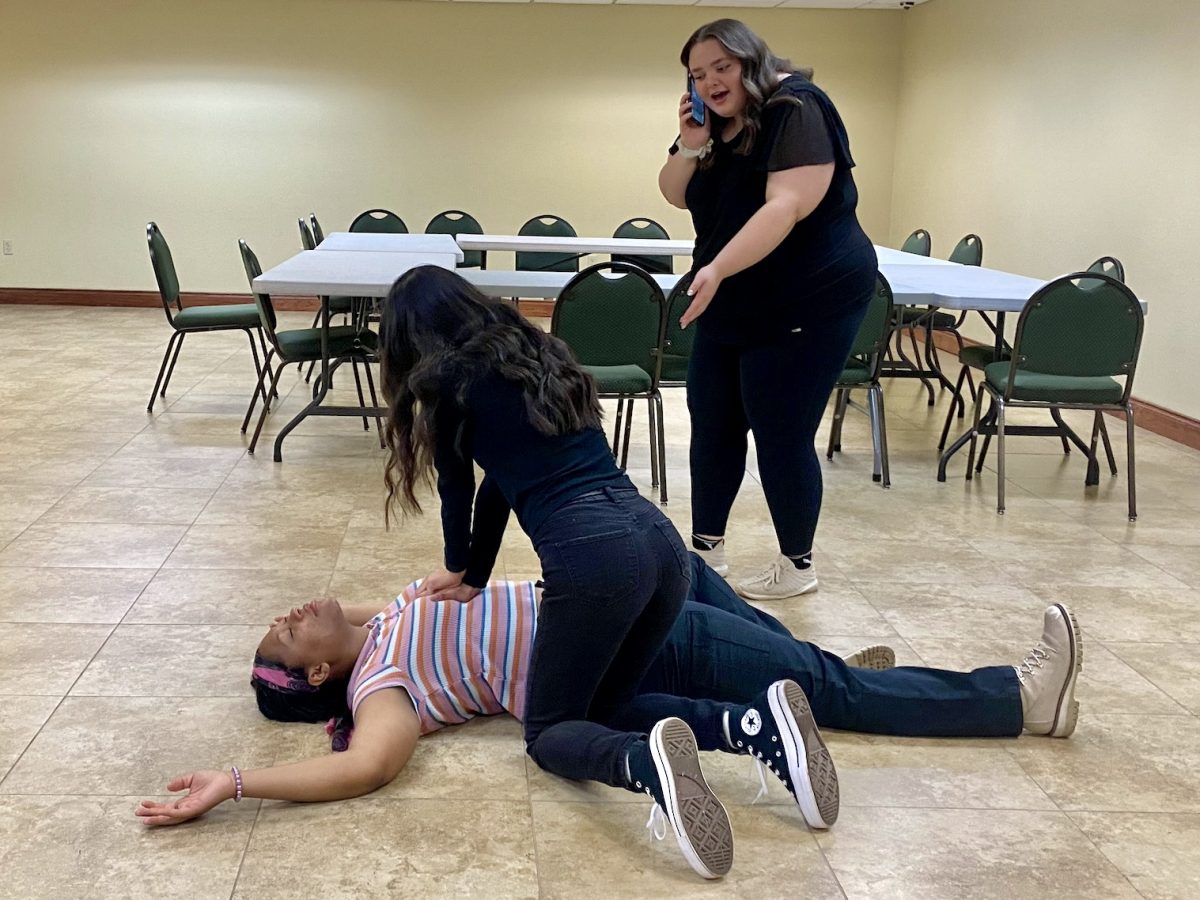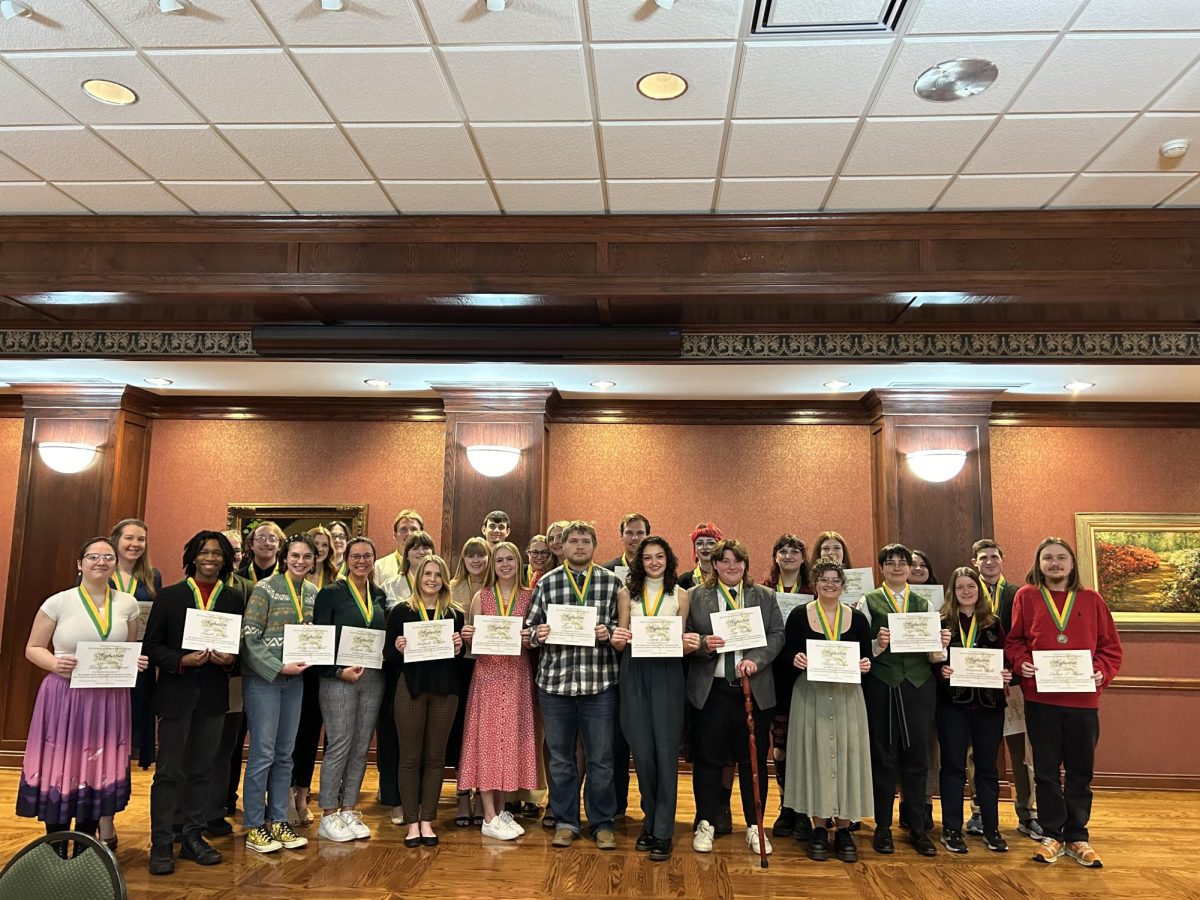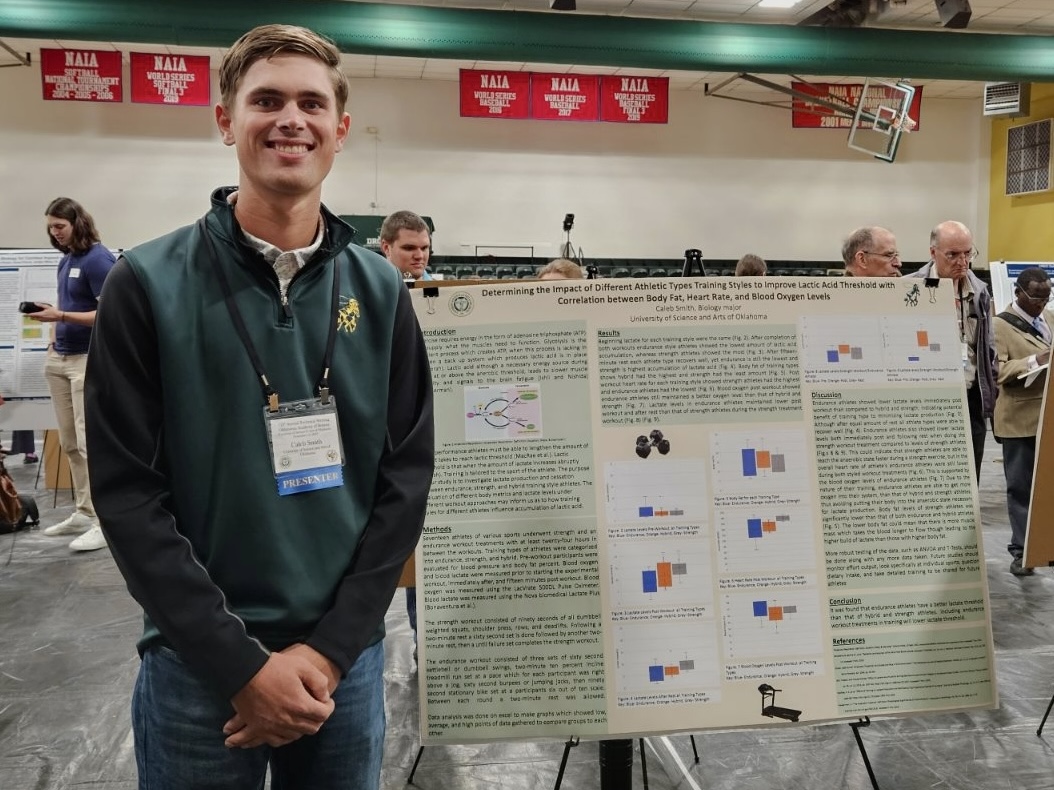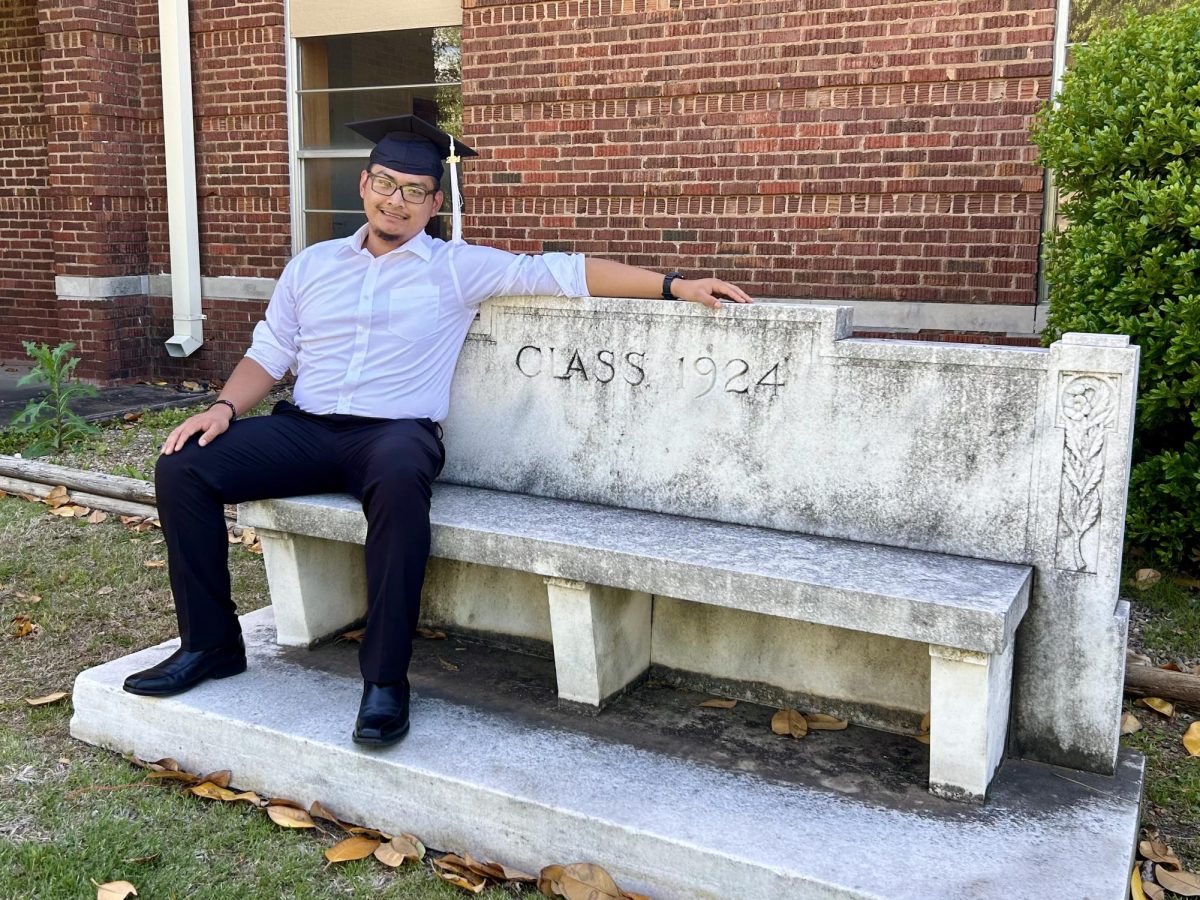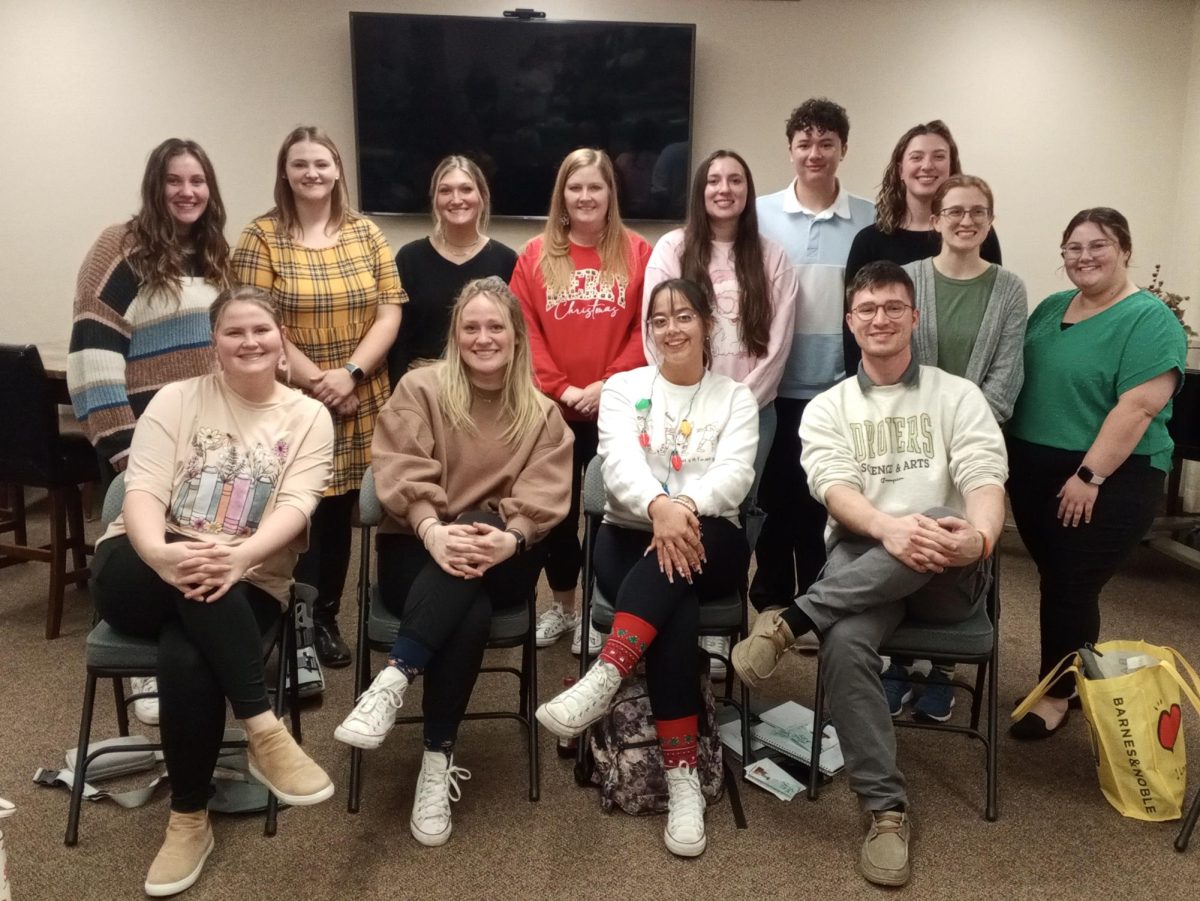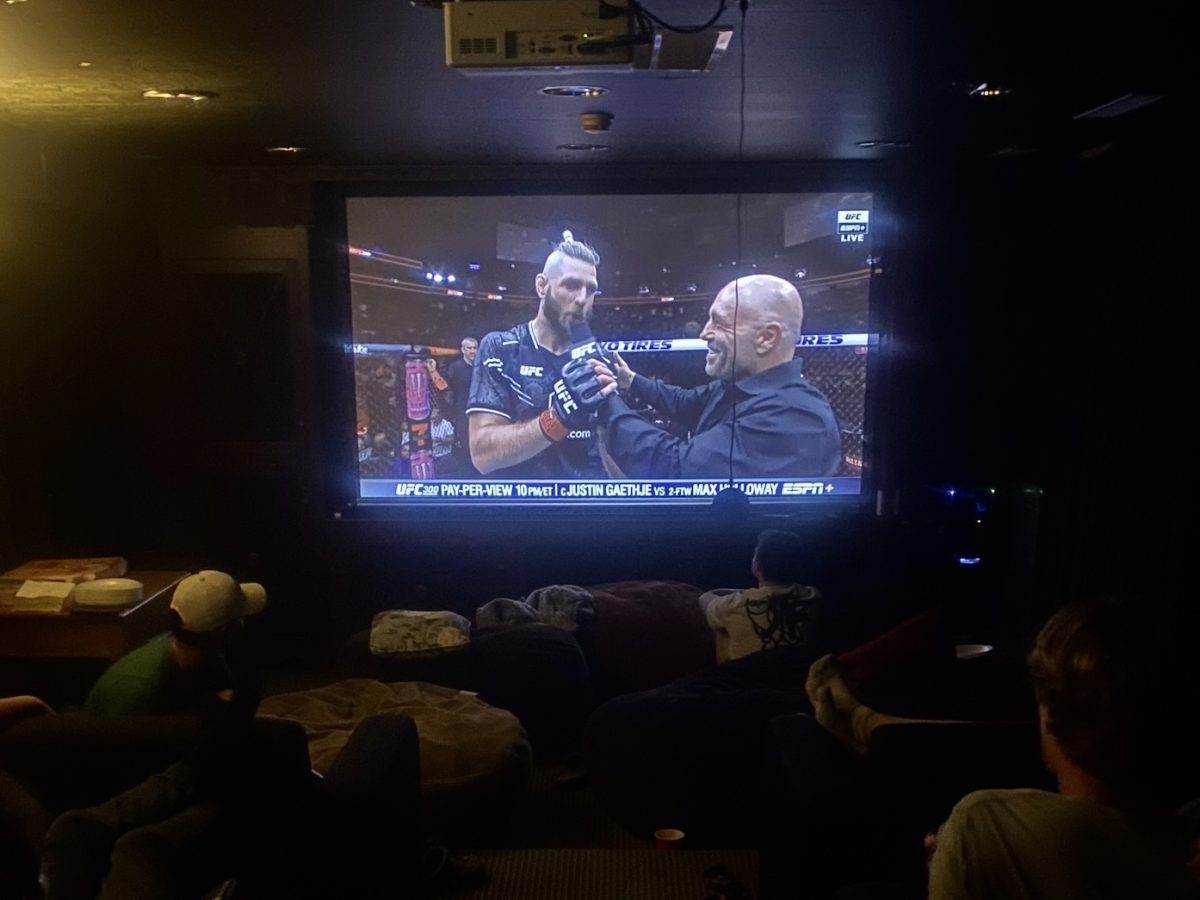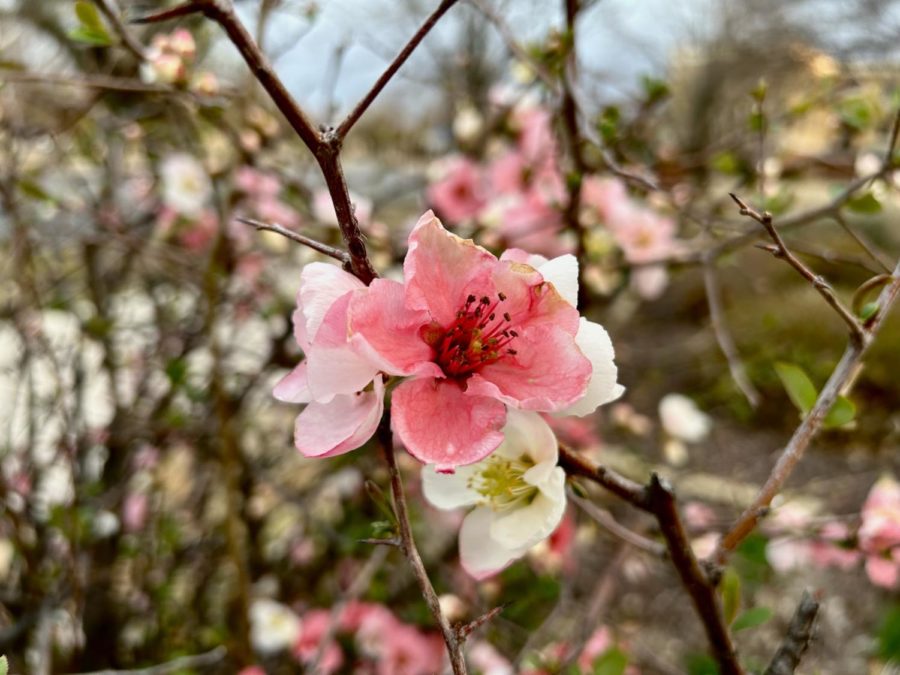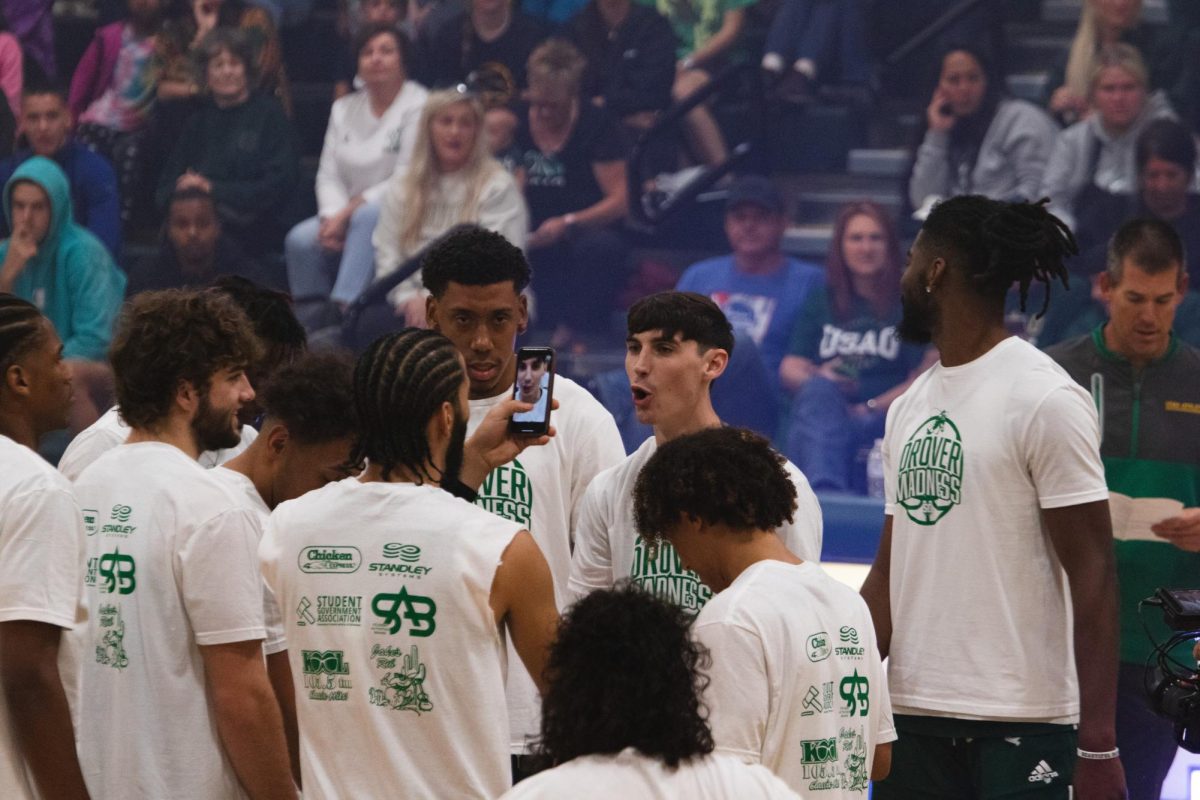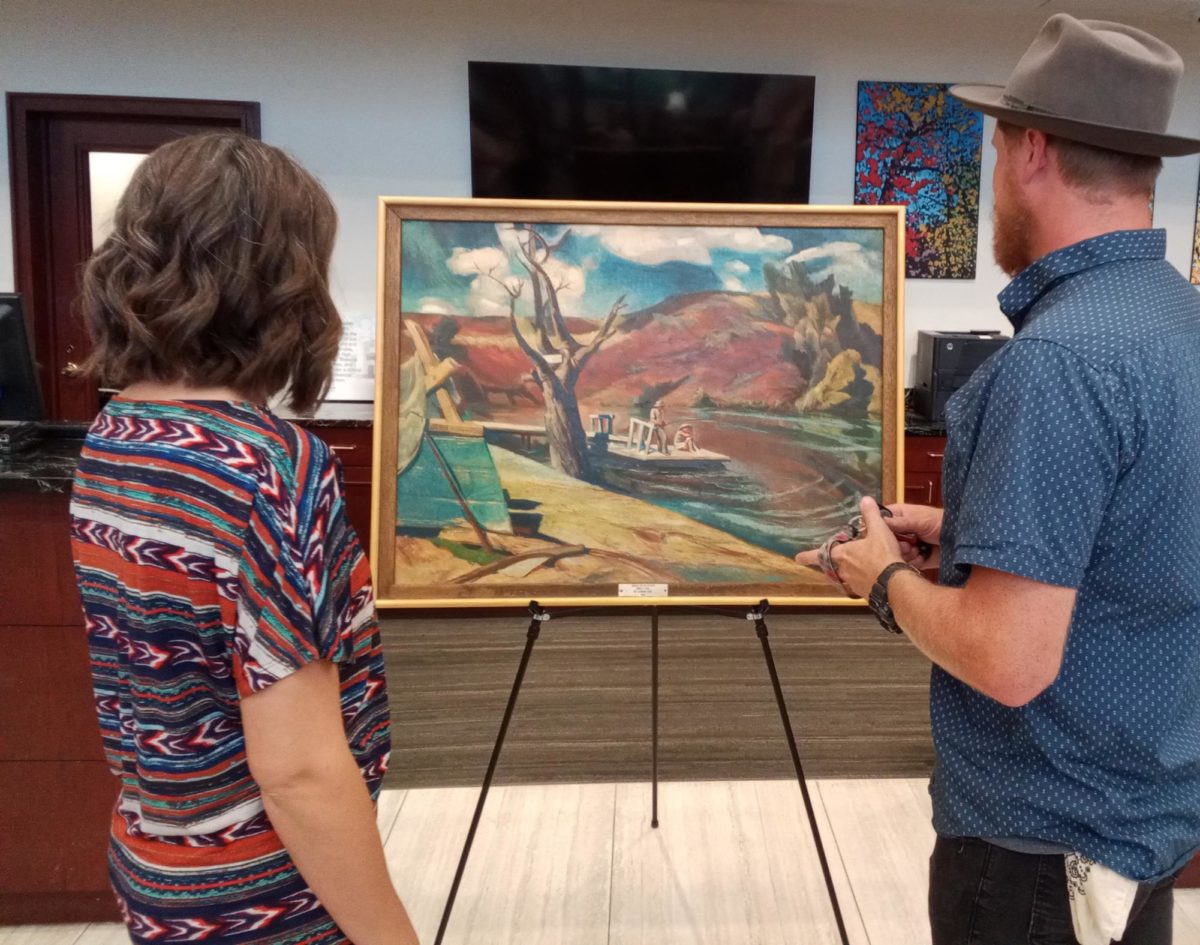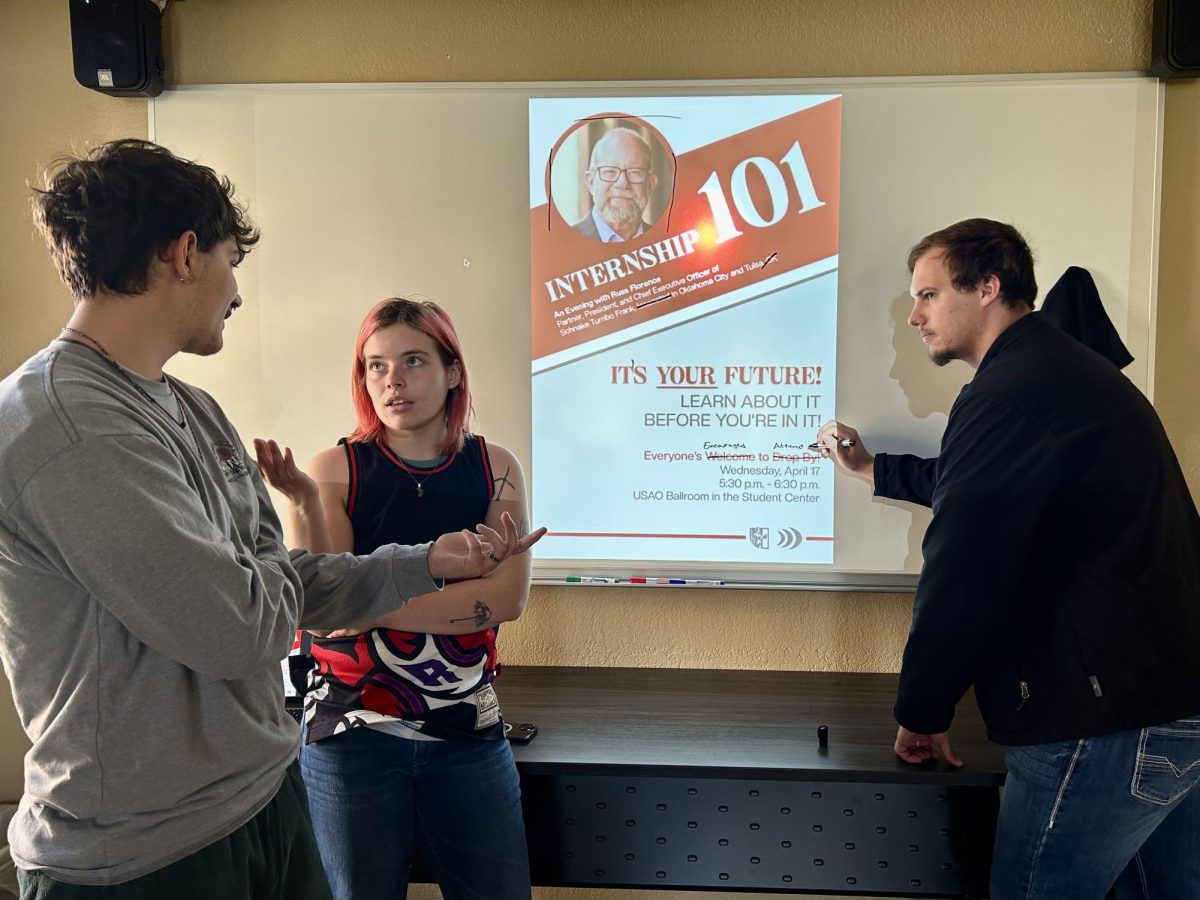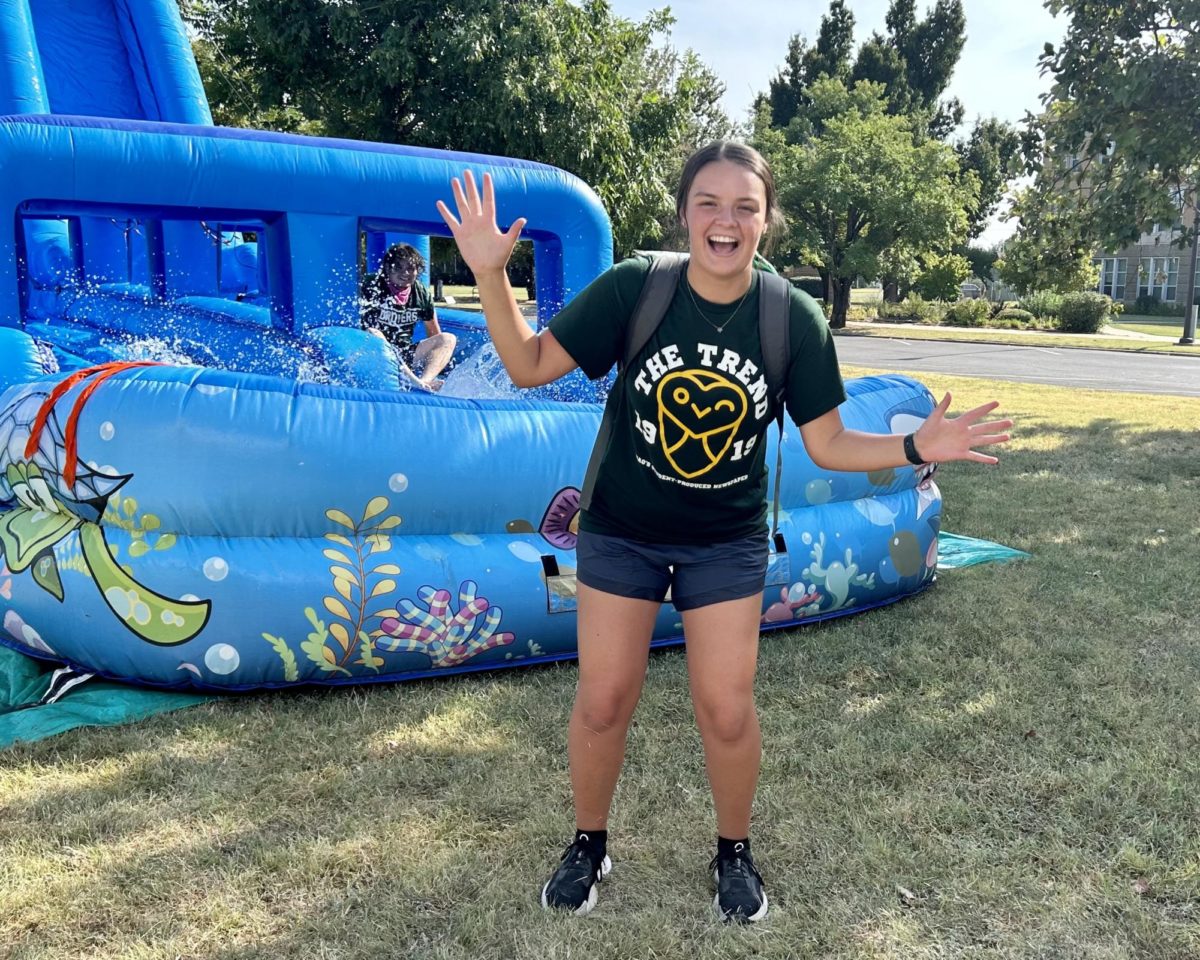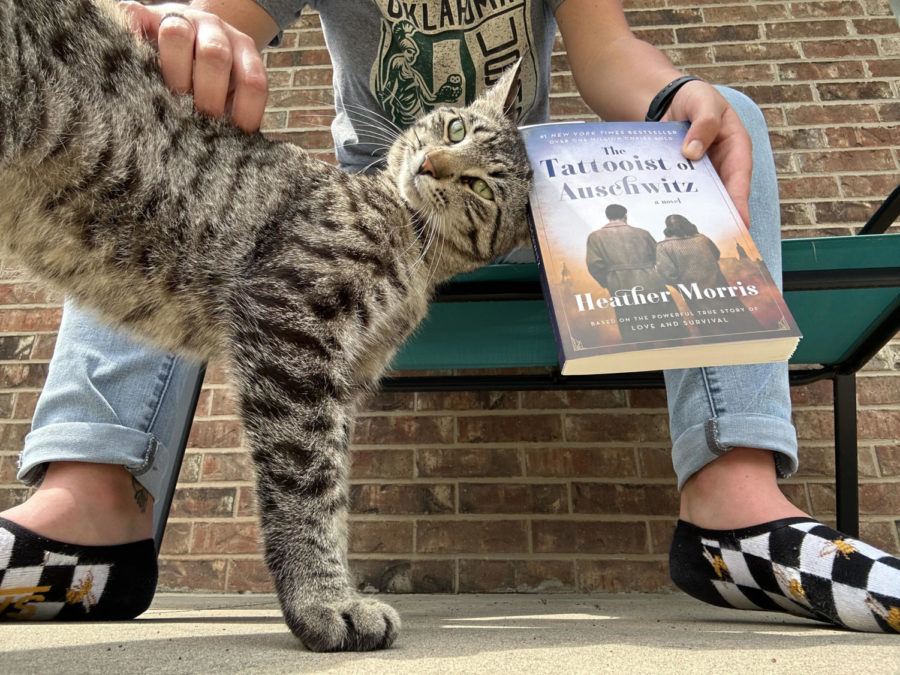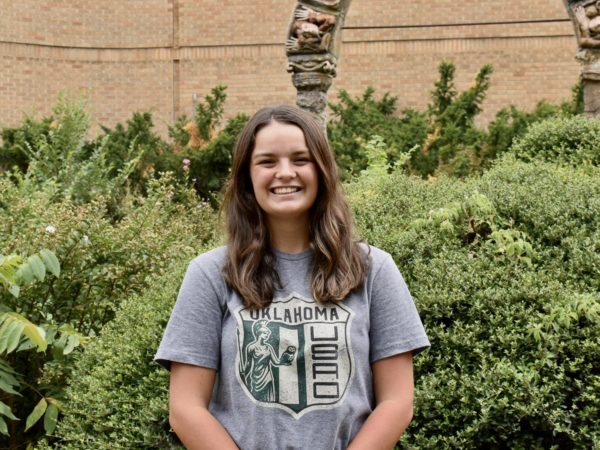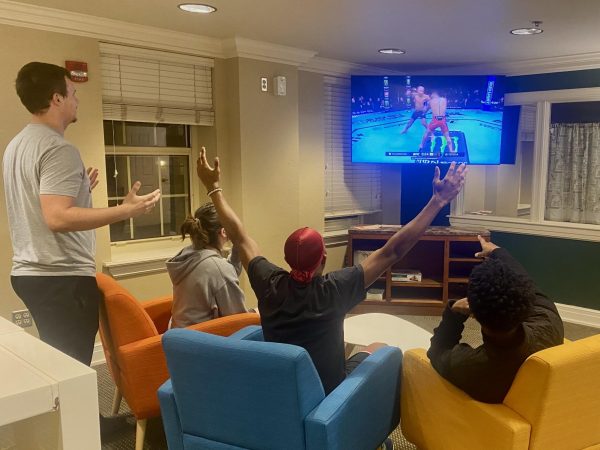“The Tattooist of Auschwitz” (Book Review)
While reading “The Tattooist of Auschwitz” outside, a friendly feline approached to learn more about the book. What are Emily’s (and the cat’s) thoughts on the book?
June 7, 2023
The Holocaust is said to have ended in early May 1945, almost 80 years ago today; however, the impact of the Holocaust did not just end there. It has impacted people for generations, and still leaves a sting in people’s hearts today. Heather Morris, the author of “The Tattooist of Auschwitz,” had the unique experience of learning about and befriending a victim of the Holocaust, Lale Sokolov.
Readers follow Sokolov through Morris’s book and learn how he was transported to the camps and what his time at Auschwitz and its sub-camps was like. Sokolov, a Slovakia native, was 25 years old when he left his family behind with the hopes that he was saving them from a worse fate. Although it was later learned that shortly after leaving his family, they were transported to Auschwitz and killed instantly. Sokolov, himself, was shoved onto a train car fit for cattle with hundreds of other men before ending up on the doorstep of Auschwitz and its sub-camp Birkenau.
Sokolov learned quickly that he had to do things he morally was not okay with to simply survive the camps. Ironically, one of his first choices led him to Gita Furman, a woman he fell deeply in love with. As the chapters unfold, readers learn more about the day-to-day horrors endured by the people within the camp walls. However, out of the sorrow and mourning, a few bright spots emerged. Sokolov tells of how he befriended people of a different belief system – people he would have crossed the street to avoid before the camp – and how he cared for the people around him in any way he could, which in one case brought Sokolov to the brink of death.
Furman became the hope that drove Sokolov to battle day after day; the hope they had a future together where they could do whatever they wanted whenever. Furman, a Slovakia native, had just turned 17 years old when she walked through the gates of Auschwitz. The pair spent three years working within the walls before being split up – with one shoved onto a train car and the other sent to march along a different set of trains tracks. With their last shred of hope – the hope of a future together – seeming nearly impossible now, the pair had to decide what they were willing to do to simply survive what landed on their laps next.
With only a few chapters remaining, most readers would fear the worst; however, I caution you to persist and read until the very last page. Morris included more historical details in the final pages of the book, explaining how she met Sokolov and learned his story of love and survival, and gave information about his family that might warm readers’ hearts. A story that seems so unique and maybe even impossible lies within the pages of “The Tattooist of Auschwitz.”
Emily is a third-year Communication major at the University of Science and Arts of Oklahoma.


